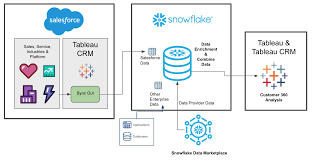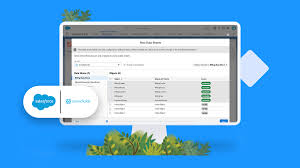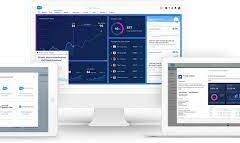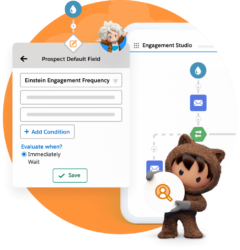What is data modelling in Snowflake? Snowflake and Customer 360 Data Model
Data modeling is the process of organizing and mapping data using simplified diagrams, symbols, and text to represent data associations and flow. Engineers use these models to develop new software and to update legacy software. Data modeling also ensures the consistency and quality of data.
What is Customer 360 Data Model? Snowflake and Customer 360 Data Model
Customer 360 refers to a comprehensive view of a customer’s data, encompassing every interaction from website inquiries to product purchases to customer support tickets. It ensures that every department within a company accesses the same accurate information about the customer.
Exploring Data Modeling in Snowflake
Data modeling involves organizing and mapping data using simplified diagrams, symbols, and text to illustrate data associations and flow. Engineers utilize these models to develop new software and update existing ones, ensuring data consistency and quality.
Unifying Business and Customer Data
Break down silos and consolidate customer data into a unified platform using native-first and third-party connectors in Snowflake. These connectors securely ingest data from various sources, enriching customer profiles and resolving identities seamlessly.
Enriching Profiles and Resolving Identities-Snowflake and Customer 360 Data Model
Enhance customer profiles securely with a plethora of data sets available in Snowflake Marketplace. Resolve identities seamlessly using applications from leading providers native to the platform.
Managing Consent and Responding to Data Subject Requests
Adhere to customer data consent choices and comply with global privacy regulations by swiftly and effectively responding to data subject requests.
Understanding the 360-Degree Customer View
The 360-degree customer view is a coveted goal for B2C marketers, aiming to aggregate and unify customer interaction touchpoints. Achieving this comprehensive view enables businesses to better understand the customer journey, personalize experiences, and enhance engagement.
Snowflake and Customer 360
Snowflake’s Data Cloud tackles the challenge of consolidating disparate data sources in Martech stacks. By collecting and unifying customer 360 data points into a SQL data warehouse, Snowflake empowers marketers to eliminate data silos and respond to customer behavioral trends promptly.
Snowflake and Customer 360 Data Model: Evolution of Customer 360
The marketing technology landscape has evolved, with organizations shifting focus to centralized data and new marketing applications. This shift involves aggregating customer data centrally into Customer 360 profiles, enabling tailored marketing campaigns and improved customer experiences.
CDPs: The Latest Incarnation of Customer 360
Customer Data Platforms (CDPs) have emerged as solutions to the Customer 360 challenge. By consolidating and organizing customer data, CDPs empower marketers to personalize customer journeys across channels effectively.
Tectonic’s Role in Advancing Data Strategies-Snowflake and Customer 360 Data Model
Tectonic assists businesses in embracing a composable architecture, future-proofing data structures, migrating data to the cloud securely, and creating a single source of truth for easy analysis of customer data.
The Importance of Omnichannel Data in Marketing
Understanding omnichannel data is crucial for marketers seeking to improve customer experiences and drive revenue. Omnichannel data encompasses every customer interaction, offering insights into behaviors, preferences, and values.
Building a Customer 360
Crafting a holistic view of customers and their journey involves mapping touchpoints, identifying data sources, integrating data into a centralized location, and deriving insights to create customer profiles.
Why a Robust Cloud Data Platform is Essential for Omnichannel
A robust cloud data platform enables marketers to leverage a single source of truth, analyze streaming data, and facilitate collaboration across teams while ensuring compliance with privacy regulations.
“Being customer-centric requires us to have a data-driven culture. We must ask ourselves how we can optimize the supply chain, product design, predictability and propensity of customers to buy our products. These are all data challenges.”
Fabio Luzzi, VP of Data Science and Engineering, Tapestry
The 360-degree customer view is the Holy Grail of B2C marketers: often sought but frequently unattainable. Companies that aspire to the Customer 360 view seek to aggregate and unify customer interaction touchpoints — from online transactions, social media, forums, and physical touches to third-party interactions, customer support, and service — to better understand the customer journey, meet demand, and personalize the customer experience.
The challenge, of course, is that the customer data is spread across these numerous, various touchpoints. Without system synchronization, errors and duplicate records can become an ongoing problem.
In the not-too distant past, interactions were largely limited to physical touch points or the phone. With the explosion of new interaction platforms, the job of aggreggating these disparate data sources has proven to be difficult. To really get a handle on all this data, modern B2C marketers need to engage with data management, data storage, data analytics, and often ML and BI tools to merge, unify, and then analyze these transactions to drive business insight.
SNOWFLAKE AND CUSTOMER 360
The number of tools deployed in the average Martech stack has exploded from just a few to more than 90 SaaS applications. Marketers have struggled to consolidate these disparate data sources to both quickly react to customer behavior and also to report internally on performance.
Snowflake’s Data Cloud solves this challenge, which collects and unifies all customer 360 data points — semi-structured or structured — into an easy-to-query SQL data warehouse that integrates with leading data analytics, BI, ML, and data management tools. This allows marketers to eliminate data silos and react to customer behavorial trends with timely and personalized campaigns.
The world of marketing technology has evolved quickly. Although the quest for a single customer view remains, organizations are now focusing on how to create new marketing applications that centralize data.
There’s a not-so-quiet (r)evolution going on in the world of marketing technology. Privacy-driven changes in the digital ecosystem are forcing companies to adopt a first-party data strategy with Customer 360 profiles at its center. But that’s not what this revolution is about; Customer 360 profiles have been part of marketing systems going back to Salesforce’s original Customer Relationship Management (CRM) platform.
What is changing is not the “what” —a single customer view, but the “how”.
What if Customer Data was aggregated centrally, organized into Customer 360 profiles, and served to new marketing applications designed to take advantage of this architecture? This sounds like a dream come true for too many organizations. This is the revolutionary approach underway. Data Cloud providers already provide the foundation for data aggregation and analysis; now, that same data powers marketing campaigns by adding marketing applications designed for this architecture.
More recently, the need for a Customer 360 has only grown stronger as businesses respond to privacy-driven changes in the marketing ecosystem. Semi-anonymous identifiers —third-party cookies and mobile devices— can no longer be relied on to reach and engage prospects and customers. In its wake is a move to a first-party approach where all of a business’s customer data is consolidated into a single system and organized into unified Customer 360 profiles.
CDPs, The Latest Incarnation of Customer 360
First introduced in 2013, the Customer Data Platform (CDP) is seen as the answer to the Customer 360 challenge, so much so that the terms are used interchangeably. But CDPs are only the latest in a long history of creating a Customer 360 for sales and marketing teams.
Customer Relationship Management (CRM) systems have been around since the late 1990s, with Salesforce’s CRM being their flagship product. Data Management Platforms (DMP) since the 2000s, with the early providers later acquired by Adobe, Salesforce, and Oracle.
What Separates a CRM, DMP, and CDP?
Viewed together, CRM, DMP, and CDP all share a common objective; to create a unified profile —a Customer 360— from all customer touchpoints. Only two factors functionally distinguish a CRM application from a DMP or CDP.
How Business User Wants to View and Action On Customer Data
Departments want to view and act on customer data to drive different business outcomes.
- Sales use a CRM platform for contact history and prospect account sizing.
- Performance Marketers use a DMP to size and segment customer data to drive more targeted and performant campaigns.
- Lifestyle Marketers use a CDP to enable personalized customer journeys across all channels.
As distinct as these use cases are, the underlying customer data is essentially the same: only the application interface and how to act on customer data change.
- CRMs define a customer using Pii identifiers such as email and phone, enrich with company data, and track sales activity: calls, emails, and meetings.
- DMPs define a customer using pseudo-anonymous identifiers – cookie or device – and track all page and ad impression activity.
- CDPs are a superset of both CRM and DMP customer identifiers —known and anonymous —and all activities being tracked.
Regardless of category —CRM, DMP, or CDP— these applications share the same technical architecture when creating their Customer 360. Data is collected in two modes:
- Batch ETL for transactional customer data from marketing and operational sources: e-commerce, email, and customer support.
- Behavioral clickstream data is collected via tags deployed within digital experiences.
From a data collection perspective, Product Analytics, Consent Management, and Ad Attribution applications also aggregate customer data using the same sources and methods.
As each application routes customer data to its own separate database there are multiple versions of a Customer 360, resulting in not one but many golden records.
Creating a separate customer database for every business application would seem to be an unfortunate, but necessary step, in order to deliver the functionality needed. In fact, for marketers, it’s hard to imagine any other way; the customer data must be within the application’s database.
Modern analytics utilizes a different architecture, where the underlying data is decoupled from the application. For example, Tableau is stored in Snowflake’s Data Cloud. Business analysts can use their preferred BI tool —Tableau, Looker, Salesforce Analytics or Sigma to visualize and interact with the data. This is a composable architecture because two components are combined to provide a Business Intelligence solution.
“Reverse ETL” and “Data Activation” were the first terms applied to this new category of application. They were so named because they operationalized data traditionally used for reporting reports and “activated” its marketing and advertising operations. Because these outcomes were the same that marketers wanted from a Customer Data Platform, the term Composable CDP has become synonymous with the category.
Composable CDP adoption has dramatically grown over the last two years. So much so that traditional CDP vendors re-architect their products around the Customer 360 maintained within the business’s data cloud.
Although Composable CDPs provide a better, more efficient technical architecture, this feature alone doesn’t explain their rapid adoption. Instead, concurrent factors drove companies to these new solutions.
- AdTech Disruption: As third party cookies and mobile device IDs go away, so do the pseudo-anonymous methods for advertisers to track and reach their prospects and customers. In its wake, companies and ad platforms are adopting a first-party data strategy known as identifiers of email or phone becoming central to their marketing operations.
- Privacy Compliance and Regulation: With the deprecation of third-party cookies, privacy regulation is causing companies to control and govern their customer data directly, assuring compliance and security.
- Limitations of Packaged CDPs: As a SaaS software solution, CDPs package up and prescribe customer data models that end up limiting the marketing capabilities of the platform. According to this Forrester Study, Only 10% of CDP owners today feel the product meets all needs. That number drops to 1% who believe their current CDP answers future requirements.
- Modern Data Stack Ecosystem: A composable architecture that decouples the data from the application would be of limited value without a marketplace of applications to choose from. In this area, Snowflake’s Data Marketplace provides a rich catalog of applications from the leading vendors in Marketing and Data.
Drawing on modern data architecture, customer data is decoupled from the application and shared centrally as a service. When combined with applications designed for marketing use cases, the combined result has come to be known as a Composable CDP. The value goes beyond providing a CDP; it extends to all the other application categories and business functions where customer data is utilized: CRM, DMP, Privacy, Analytics, Operations, Product, and Operations.
In this era, Cloud Data platforms like Snowflake will play a key role in helping companies take control of and operationalize their customer data.
Tectonic can push forward the true value of your data. Our experienced team of experts are eager to move your business towards a composable architecture: whether it is future-proofing data structures, migrating data to the cloud as efficiently and securely as possible, or creating a single source of truth from where you can easily analyze customer data.
Today’s customer journey is a winding one. It involves both physical and online interactions across a variety of different touchpoints, from social media to email to websites. To make matters more complex, customers expect a streamlined, personalized experience wherever they interact with a brand. To be successful, marketers must have a thorough understanding of customer intent and path to purchase.
Advertisers, retailers, and media companies are using omnichannel data to help them better understand customers and deliver a stronger customer experience, leading to improved conversion rates and customer retention. But what is omnichannel data, exactly? And how can you use it effectively to improve your marketing initiatives? Let’s explore the answers to these questions.
Snowflake and Customer 360 Data Model
Omnichannel data, crucial for analytics, is data generated from every customer interaction, uncovering customer behaviors, preferences, attitudes, and values. Omnichannel data analysis differs from multichannel data analysis in that omnichannel data analysis emphasizes an integrated approach. Rather than simply collecting siloed data and looking at it channel-by-channel, an omnichannel approach seeks a holistic view.
Marketers are using omnichannel data not only to better understand historical customer activity and present behavior, but also to predict the future needs and wants of customers. Omnichannel data can be used to improve product recommendations used in upselling and cross-selling strategies. Omnichannel data also reveals bottlenecks in the customer journey and how the customer experience can be smoothed.

While creating a customer 360 delivers significant ROI, it isn’t easy. Three challenges face today’s marketers as they seek to use omnichannel data to improve the customer experience and drive more revenue.
- Siloed data: Omnichannel data is stored across dozens of websites, devices, ad platforms, social media platforms, and more. Without a “single source of truth” that brings all this data into a central location, marketers can’t get a holistic view of their data. Additionally, siloed data tends to suffer quality issues due to inconsistencies in overlapping data.
- Variety of data: The many channels and platforms involved in omnichannel marketing are generating a multitude of data in a variety of different formats. This data can be extremely difficult to wrangle without a powerful data platform that provides elastic infrastructure, unlimited scale, and risk mitigation.
- Privacy regulations: Marketers seeking to use omnichannel data must address the requirements of privacy regulations designed to give customers control of their data, including GDPR and the California Consumer Privacy Act (CCPA). A consent management strategy and robust data security management capabilities are crucial.
WHY A ROBUST CLOUD DATA PLATFORM IS ESSENTIAL FOR OMNICHANNEL
Any omnichannel initiative requires a robust cloud data platform capable of meeting the challenges involved in omnichannel data analysis. Here’s what your data platform should allow you to accomplish.
Marketers and companies are collecting purchase data, CRM data, website traffic data, paid media data, and more. To craft exceptional omnichannel experiences, you must be able to analyze these data sets together and see the bigger picture of how customers are interacting with your company.
Omnichannel marketing involves collaboration between Marketing, Sales, and Customer Service teams to improve customer experiences across the customer journey. Your teams should have the ability to work with omnichannel data without worrying about running afoul of privacy regulations. A good cloud data platform provides robust governance and security to ensure safe collaboration.
Reach out to Tectonic today for assistance planning your Customer 360 view.













